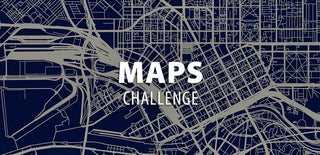Introduction: What3words Haiku Memory Map
For a while I had been hearing about the what3words maps and found the idea very interesting.
This project serves as an educational art project and can be done with children to look into the different sorts of maps while also studying haikus and producing a final piece of art special to the individual.
It can also just be done for fun by anyone!
Step 1:
My son and I started by each choosing a place which was very special to us.
I chose one of my favourite spots from where I used to live in Wales, Drysllwyn Castle. This is a very atmospheric, ruined castle by the looping river Tywi. When he was six I took my son there and he loved it aswell, running around the slopes and exploring the ruins.
My son chose the Cutty Sark, an old tea cutter tall ship, preserved in Greenwich London beside the Thames river. He loves anything to do with ships / pirates and was thrilled to visit it a few years ago.
Step 2: Finding What3words Co-ordinates
We then looked at the What3words maps. For those who haven't encountered them before, this mapping system can pinpoint every location on the planet by three particular words. Every three metre by three metre area has its own three words. So each place actually has several What3words co-ordinates, depending how large an area it covers. So we looked at the choice and picked a point which had words that appealed to us.
Mine for Drysllwyn was Tidal - carver - wove.
My son's for the CuttySark was Ships - jumpy - friend.
Step 3: Writing a Haiku
Our next step was writing a haiku using the three words of the co-ordinates.
Depending on the age of the students or children doing the project you can apply strict rules for this stage or have a more flexible approach.
Haikus are an ancient form of japanese poetry which are made up of 17 syllables. Strictly the lines are arranged in three lines of 5,7,5 syllables. For younger kids though just producing a poem of 17 syllables is fine. It doesn't really have to make a lot of sense except to its creator!
I chose my three word co-ordinates because I have always been fascinated by the pictures at Drysllwyn of the ancient village and have pictured the lives of its inhabitants, so bringing carvers and weavers into my project and haiku was very appropriate.
My son's love of pitates and the CuttySark's cargo inspired his haiku.
Step 4: Make Your Collage
We then trawled through all my photos of our visits to these places. You can add drawings you may have produced, souvenirs, collages, writings, other maps, all sorts. Take photos of all these elements and make a photo collage.
I had photos taken on our visits to Drysllwyn and the CuttySark as well as photos of an escale we went to in france. This was a meet-up of many tall ships which we were able to go aboard and they sailed and even re-enacted battles.
We used Picasa for making our colages but there are other apps and programmes for doing this.
Step 5: Finished Collages
We then wrote our haikus over the top and voila!
There are so many different ways you could approach this project nd ways you could extend the learning from it into the subjects looked at - maps and mapping systems, haikus, poetry, for us tall ships and welsh castles and medieval life... The only limit is your imagination!
You could also use the place of your birth, your marriage, somewhere key for your ancestors... This is such a personal project it can be adapted in all sorts of ways to teh individual and thus the finished project would make a great present for friends or family.
We would be very interested if you produce one of your own - to see it and hear the story behind it.

Participated in the
Maps Challenge











